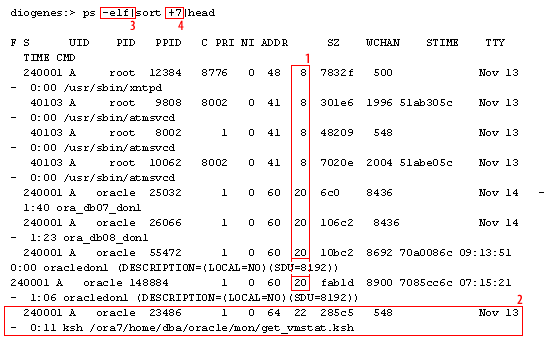View Dispatching Priorities

- The root processes have the highest priority (8) while the Oracle database tasks all have a priority of 20.
- This Oracle task has the lowest dispatching priority of 22. It originally had a nice value of 20. The UNIX OS detected that it was a long-running job and automatically lowered the dispatching priority for this task, so that other online tasks would execute faster.
- The command parameter is the name of any executable file on the system.
- If you do not specify an increment value, the nice command defaults to an increment of 10.
When should an Oracle DBA be viewing Dispatch Priorities?
An Oracle DBA should consider viewing dispatch priorities in the following scenarios:
- Performance troubleshooting: When the database performance is not meeting the expected standards, the DBA should check the dispatch priorities to determine if there are any low-priority operations that are consuming a large amount of CPU cycles and causing performance issues.
- Capacity planning: When planning for future capacity needs, the DBA should consider the current dispatch priorities to determine if there are any operations that need to be assigned a higher priority to ensure that they receive the necessary CPU cycles to run efficiently.
- Resource allocation: When allocating resources to different parts of the system, the DBA should consider the dispatch priorities to ensure that the most important operations receive the necessary CPU cycles, while lower-priority operations are executed only when there are sufficient CPU cycles available.
- Resource contention: When there is resource contention between different parts of the system, the DBA should view the dispatch priorities to determine if any operations are competing for the same resources and if they need to be re-prioritized to resolve the contention.